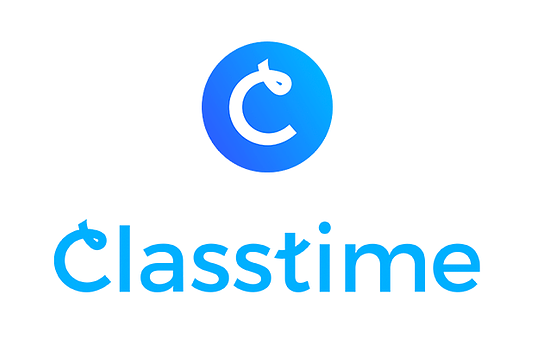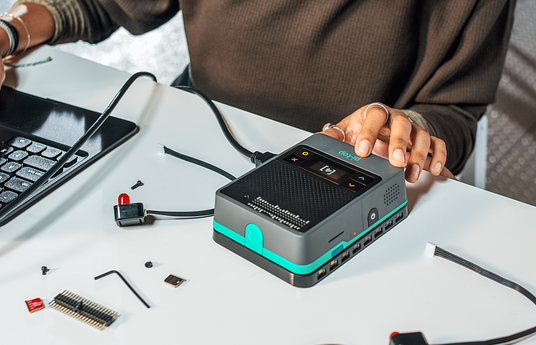Our District's Innovative Practices:
At the Canon-McMillan School District, we want all students, not just a select few, to have access to a high-quality, cutting-edge curriculum.
In the last decade, we noticed that only certain populations of students were being exposed to the latest advancements in technology – mainly from teachers comfortable using new technology tools. We just were not reaching everyone.
Tired of seeing only small pockets of innovation throughout the district, we made a commitment to provide support for progressive practices across all disciplines and all grade levels. It is our responsibility to not only offer technology, but also to embed it in as many curricula as possible. Writing the technology into the curriculum ensures that all students will have access to the same tools and projects, making our students' readiness for the future equitable across all populations.
With this goal in mind, the district created a Continuum of Computational Thinking tools that mandate certain concepts and practices to be taught at specific grade levels. Starting with a teacher survey, professional development and resources were identified and implemented. Teachers received training and were given the remainder of the school year to experiment with different strategies in their classrooms. New, forward-thinking curricula were polished up over the summer and continue to evolve to this day. To help support our teachers in this initiative, we routinely gather by grade level across the district to collaborate and develop new ideas.
Making an Impact:
In 2015, the Canon-McMillan School District started teaching coding literacy in Kindergarten, creating a delineated path for computational thinking and computer programming. In 2017 we made a major curriculum shift and began to use a technology coach to co-teach with our K - 4 classroom teachers. Our curriculum and continuum continue to evolve, but our vision to ensure that no child will be left behind, due to their ethnicity, sex, nor family's financial or educational circumstances, continues to be at the forefront of our initiative. We believe that providing an early start with computational literacy will lead to a prosperous career and a pathway out of poverty for our students.
We know that computing jobs make up 60% of all STEM jobs and that only 10% of college degrees in the STEM field are actually for computing. Currently, there are 20,192 computer science jobs available in Pennsylvania alone. By 2020, there will be 1.4 million jobs in the field with students being unprepared.
It is essential to provide our K-12 students with skill sets that will fill these voids in the industry and greatly impact the future computing workforce. Our students are already on the same wavelength. Hear anelementary student's perspective on her future career path after learning how to code in Minecraftand another student's interview on National Public Radio.
Program Disruption:
Canon-McMillan's full coding immersion in our K - 4 grades has begun to disrupt the curricular offerings we have had in place for the past 10+ years in grades 7 - 12. As our students move through the grade levels, they are bringing with them their coding and computational skills, positively disrupting our higher level programs.
Although middle school technology teachers, for over ten years, have been teaching all students to create a game in Game Maker, develop a website with HTML, design 3D printed prototypes, and program robots, they are redesigning their projects knowing that their students come to them now with higher skill sets: programming arduino's, spheros, robots, etc. by using the program languages of JavaScript and Java rather than block based coding. This year the department was able to offer 8th graders the first true programming class usingCarnegie Mellon University's CS Academywith Python.
Seeing this trend shift upward in our course offerings, our high school added two additional Advanced Placement course sections. For decades the mathematics department at the high school offered AP Computer Science A with Introductory classes, but this year was able to offer AP Computer Science Principles classes, utilizing Code.org's curriculum. Recently the computer science teacher was selected to sponsor Amazon's Future Engineer as well as be selected to work with Microsoft PhilanthropiesTEALS program, committed to computer science in every high school.
What Other Districts Can Learn:
We've learned that having a technology teacher pop in and out of classrooms to administer independent, stand-alone lessons is not as effective as having a consistent technology co-teacher/coach. Once traditional classroom teachers are expected to learn to code alongside their co-teacher and students, an amazing transformation takes place. A dynamic collaboration between an expert in coding and an expert in grade-level curriculum sparks and greater advancements can occur. This method can be implemented in other school districts to spread computer science immersion across the region and beyond.
As we continue to require K-4 teachers to use coding as a tool to help students showcase their knowledge, we plan on expanding our coding at grades 5 and 6 by implementing Code.org's curriculum and getting more teachers to use coding with Hummingbird Robotics, Ozobot's bit, programming drones, and more.
Our region has already taken interest in what we are doing, and we love to share! We are active members in Pittsburgh's Remake Learning's CSforPGHand STEM ecosystems. We have invited members of the Pennsylvania Department of Education, along with numerous local businesses and dignitaries, for site visits. Partnerships with local businesses create a positive, mutually beneficial relationship for all parties involved. For example, Range Resources has supported some of our small projects through funding and by inviting our students in to show what they have been creating with coding to their staff. When businesses see what you are doing, they will be more inclined to help support your initiative!
Driving Beliefs:
With all administrators and school board supporting our efforts, these driving beliefs helped us forge and refine our vision for Computer Science For All:
We believe that:
- all students, regardless of their race and/or socio-economic background, should be afforded a hands-on education that has the 21st technology tools embedded directly into their curriculum.
- the new essential literacy is coding, putting its relevance on the same level as learning how to read or do basic math. ALL students should learn these new skills.
- we must help students learn to think and solve problems in a systematic way. (Breaking down a problem down, finding general and abstract patterns, devising an algorithm for the future, etc.)
- coding should not be a stand alone course, and we must begin to teach all students how to utilize coding within other technologies. Understanding of electronics and circuits is essential for all students, and they must see the connections between coding and devices. Without a child seeing these connections, they may merely believe the sole purpose is for play. By including the engineering design process along with learning how to manipulate devices, students begin to see the connection between coding and programming.
- collaborative spaces allow students to explore unique, creative ways to make their learning and thinking visible.
- there should be a learner progression/continuum for coding, starting with block-based coding in elementary school, and shifting to programming in the middle and high school with Python, JavaScript and, eventually, Java.
- in order for transformation to take place within our schools, our employees must know that we are open to any new ideas and innovation. Knowing that innovation can be ignited in a multitude of arenas, we strive to foster an environment that encourages open communication, collaboration and creativity.
- the students themselves should be part of the collaboration, too. We invite them to complete student surveys and career surveys before and after program implementation to help us grow.
You know your teachers have reached full immersion when they (and their students!) are finding ways to use coding and technological tools to showcase student learning outside of simply learning how to code.



